In the far south of Chile lies one of the world’s most beautiful national parks, Torres del Paine. This national park has become famous due to it’s namesake rock towers, “Las Torres” which thrust themselves up from the earth in the center of the park. However, it isn’t just these towers that attract hikers and trekkers to the park. This area of Patagonia also sits astride the Southern Patagonian ice field, home to massive glaciers that stretch further than the eye can see. In the park one can glance up at some of the most uniquely carved mountains in the world, where snow falls in the middle of summer and Andean condors soar to impossible heights, then turn to glance down upon a 15 mile long glacier that is slowly bulldozing the valley below as it makes its way from the heart of the Southern Patagonian ice field.
This beauty comes with a price though, for Torres del Paine is home to some serious weather. Ferocious winds whip around the mountains and through the valleys, bending all to its will; birds, bees, grasses, bushes, trees, hikers. One minute it is sunny and warm, the next, rain begins to turn to snow. This is nature at its most raw, and also its finest. If you want to experience this place, you must be prepared. No Paine no Gaine.
Here’s an intro into what I experienced in Torres del Paine:
I spent 5 nights and 6 days trekking in this gem of nature. The first day gave me a small taste of what was to come. It started out beautiful, sunny, and warm. I hiked for 3-4 hours in a t-shirt enjoying the views around me as I slowly ascended towards Las Torres, the famous rock towers of the park. Then clouds blew in, the temperature dropped, and it began to rain. For the next 3 hours it rained steadily. The mountains and valleys vanished in the clouds and fog. Today was not going to be the day to make the climb to Las Torres. I trudged into camp soaked from the waist down (I hadn’t put my rain pants on in time). Camping with half your gear wet is a lot of fun, especially when the night is windy and cold.
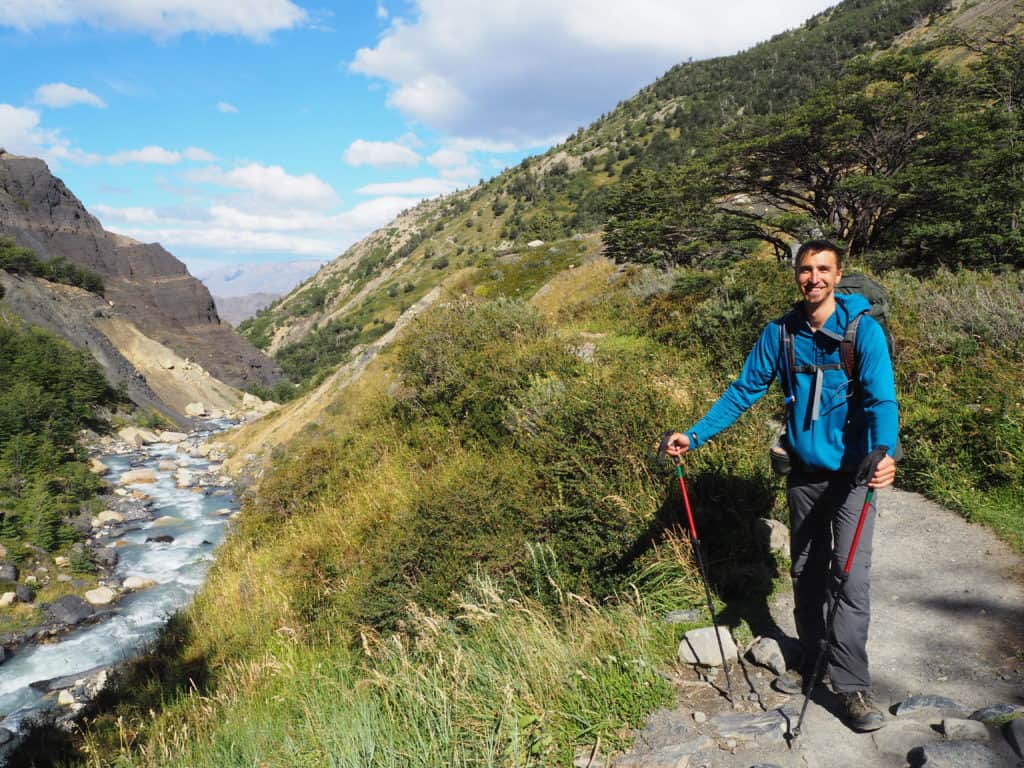
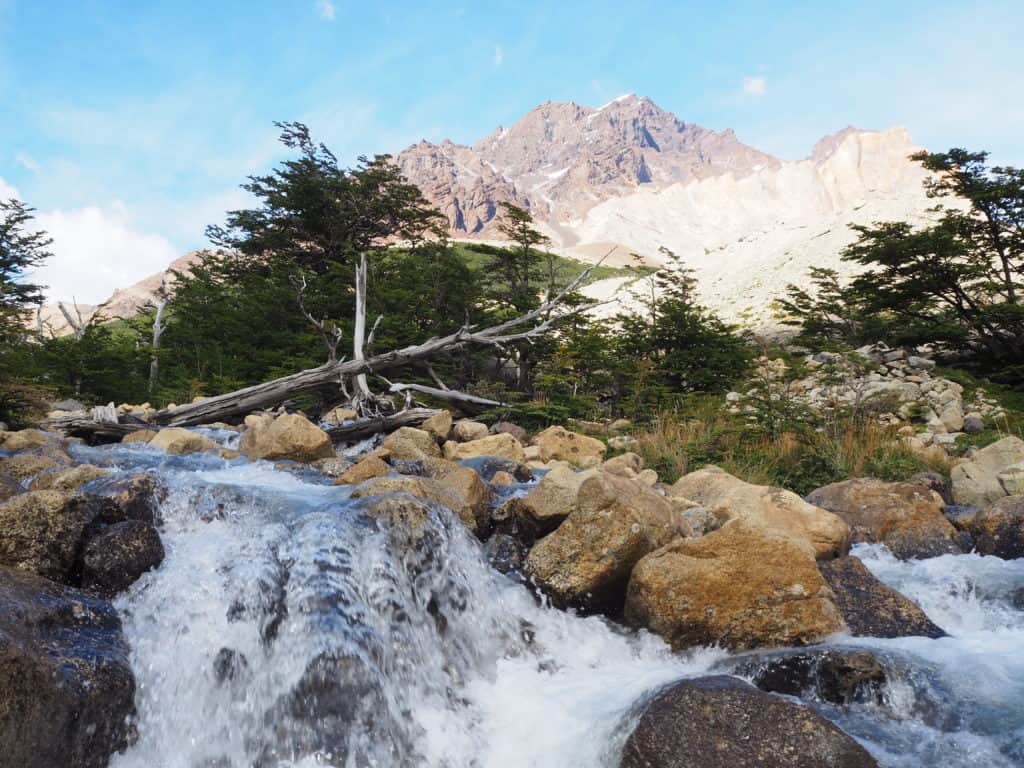
When I awoke, I was treated to a most unwelcome sight; a gray sky and no visibility. I made my way back towards Las Torres with fingers crossed. After 2 hours the gray sky was replaced by a brilliant blue and the earth began to dry itself out from the day before. By the time I reached the base of Las Torres it was an absolutely gorgeous day and the towers were standing against the azure sky in full glory.


I ate a small lunch in front of the towers, then headed down. I still had a long day in front of me. I was carrying all of my food for the next 6 days, plus my camping gear, and this day was going to be the longest walk of the trip. The trail from Las Torres to my next camp skirted around Mount Nieto. On my right was the mountain, my left the valley below, filled by lake Njordenskold. After about 6 hours of hiking my pack began to feel heavy. I was carrying all of my food for 6 days, camping and cooking gear, plus a limited amount of clothes. I still had a long way to go.

As I walked around Mount Nieto it seemed like somebody was secretly placing bricks into my backpack. About one per hour. 7 hours of hiking in and my feet began to hurt. 8 hours in, the shoulder straps of my backpack began to dig into my collar bone. 9 hours in, my knees began to creak under the weight of those additional bricks. At hour 10 the park decided to throw an additional obstacle into this increasingly difficult hike, wind. Lots of wind. As in, WAY TOO MUCH WIND. I had been hiking into a steady 30 mph headwind for the past hour. This would have been reasonable had it stayed at that. But that’s not how things roll in this place. Gusts of wind started to pick up, roaring their way through the valley, coming directly from the west, where the world’s 2nd largest ice field is. Yeah, these weren’t warm winds hitting me in the face. There was a moment when I rounded a corner and I was quite literally smacked in the face by a gust of a wind. It felt like somebody backhanded me. It’s the only time in my life I’ve been physically assaulted by something that doesn’t have a physical form.
Here’s a video showing some of the windy weather I experienced:
I spent the next hour trying to avoid this wind, which was of course impossible. I would hide behind trees when gusts would blow, then when the winds would calm back down, to maybe 40 mph, I would rush from my hiding spot and quickly move to the next spot that would hopefully be somewhat protected. I wasn’t always successful. There were several times I was pushed backwards down the trail. Not metaphorically pushed backwards, actually pushed backwards. I felt as if I had drunk 10 beers before I set out on the trail. I couldn’t keep a straight line, I was stumbling around rocks, tripping into trees. At one point I had to hug a tree for about 15 seconds to keep from being blown down to the ground. If I hadn’t grabbed the tree I most surely would have eaten some dirt and rocks of the trail. Without exaggerating, these gusts of wind were the strongest I’ve ever directly experienced. I didn’t have a way of measuring the wind gusts, but I’m certain they were in the 80-100 mph range. I quite simply couldn’t move forward in those gusts, I had to wait them out. As if to grant me some sort of solace during those moments I hid from the wind, the park would grant me marvelous views of Los Cuernos Mountain, one of the most unusual and striking mountains in the park. It seems to have been rent in two by a giant sword, and is encircled by a belt of gray granite. Most striking are the coal black peaks that sit atop the grey granite belt. These unique features gave the mountain its name, for from afar the mountain looks like the horns of a bull, and in Spanish Los Cuernos means “the horns”.

When I finally rolled into camp that night, I was completely and utterly exhausted. I had hiked for almost 12 hours, 2 hours of which was very steep uphill hiking. I had drunk plenty of water, but I still felt like I was dehydrated and overheated. My feet were killing, my knees hurt, and I couldn’t touch my shoulders without grimacing in pain. I was spent. At least I would have a good nights sleep. Wrong. The winds that nearly blew me off trail continued all night long. There were moments when I legitimately thought my tent would be blown away with me inside of it. I caught a few zzz’s in between gusts.
The next day was to be a much easier hike. Only about 8 hours total, and that over “flat” ground. Thankfully it rained the entire time, because who would want to hike in dry weather? My rain gear kept me dry for about 5 hours, then it threw in the towel. Wetness began to creep in. By the time I got to the Paine Grande camp I was wet to the bone. Underneath my rain jacket and rain pants were sopping wet clothes. My boots had become mobile puddles. It was also still raining when I got to camp, so I got to experience the joy of setting up a tent in the rain, while completely drenched, and putting my drenched belongings inside of a now wet tent. To be fair, the inside of the tent was actually relatively dry after it was set up.
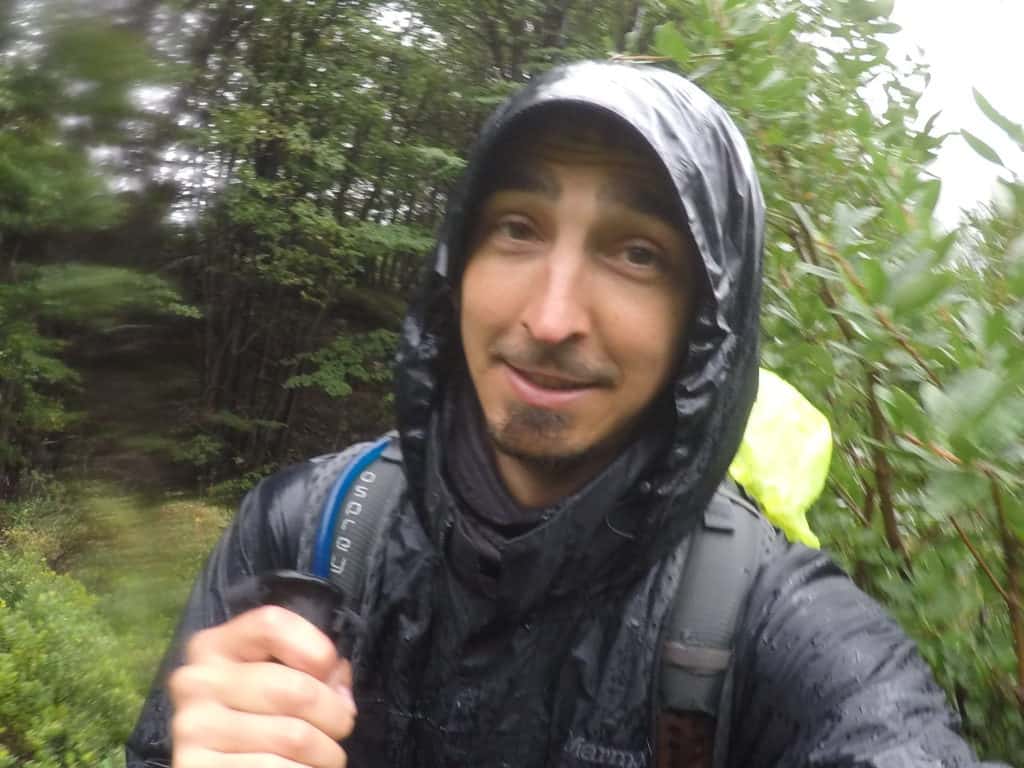
However, for all the suffering that the park can inflict on those who visit, it will reward with equal measure. For when I awoke the next morning, the rain that had soaked me the day before had fallen as snow on the mountains around me. The black tips of Los Cuernos were no longer visible as they had been dusted white. Paine Grande, the largest mountain in the park was now even more beautiful than before. It gave me new energy and a sense of excitement for my hike up to camp Grey, where the southern Patagonian ice field stretches an icy finger into the park.
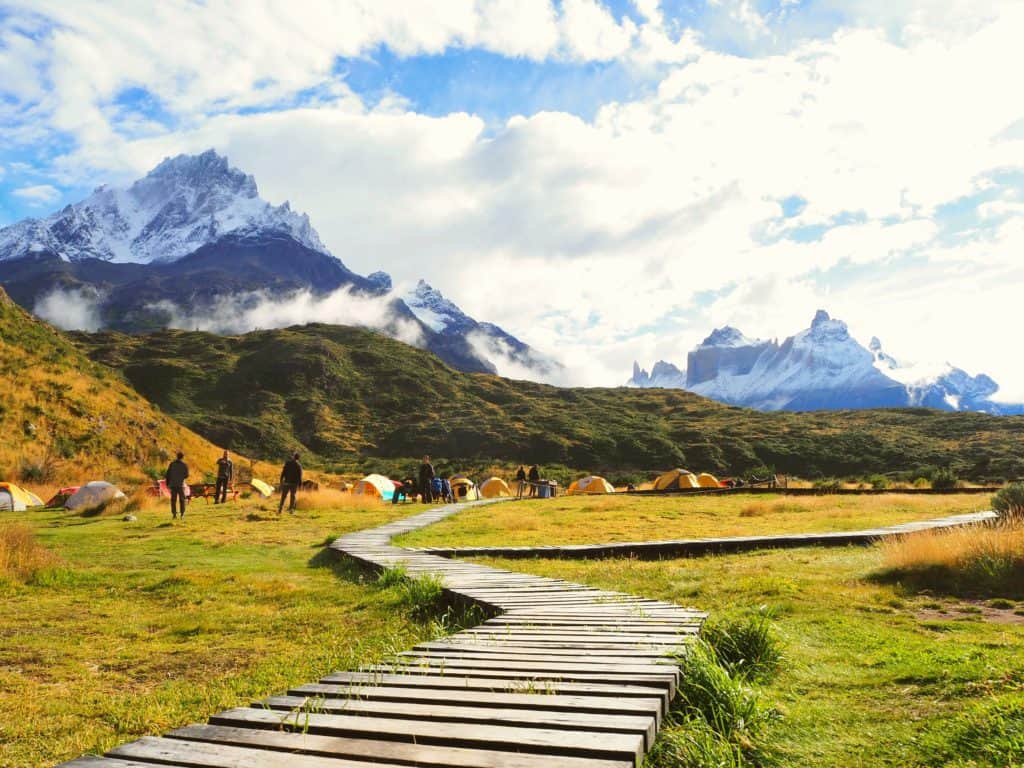
The hike to camp grey seemed like a walk in the park. There wasn’t any wind (well, no wind in Patagonia means a steady 10 mph wind), it didn’t rain at all, the sun was shining, and it was warm. I walked with snowcapped peaks on my right, and the glacier-fed lake Grey on my left. As I crested a rise I saw camp grey, and beyond it the massive glacier Grey. A sight that literally made me gasp aloud. One doesn’t expect to see such an enormous amount of white and blue ice sitting in a valley surrounded by green grass, flowers, and 60 degree weather. Nevertheless, there it was in all its icy glory. I dropped my gear off at camp and headed towards the glacier to book a kayak trip on the lake.

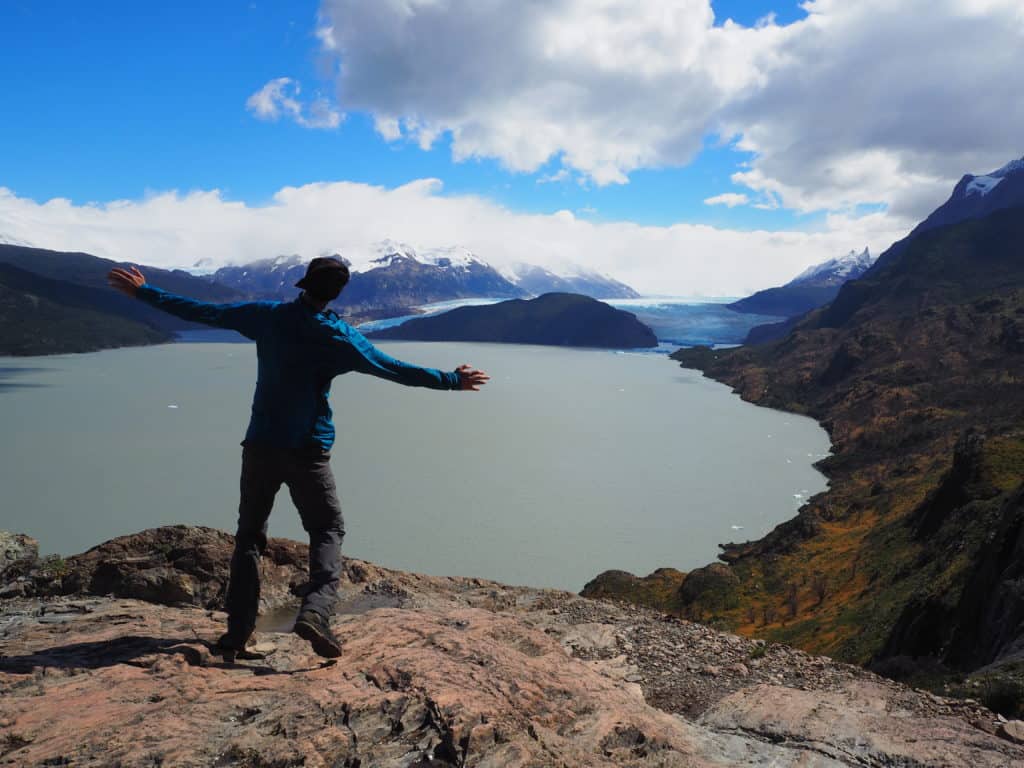
Kayaking around the icebergs of the glacier was sublime. The various shades of blue in the ice was mesmerizing. The sound of icebergs calving off the glacier and crashing into the lake was both astounding and frightening. We kayaked towards the glacier until we got within about 600 feet of this 100 square mile behemoth, its face 4 miles wide and 100 feet tall. We wouldn’t go closer, for occassionally the glacier will calve off house-sized icebergs that send ice shards flying hundreds of feet and cause massive tsunami waves to radiate out into the lake.
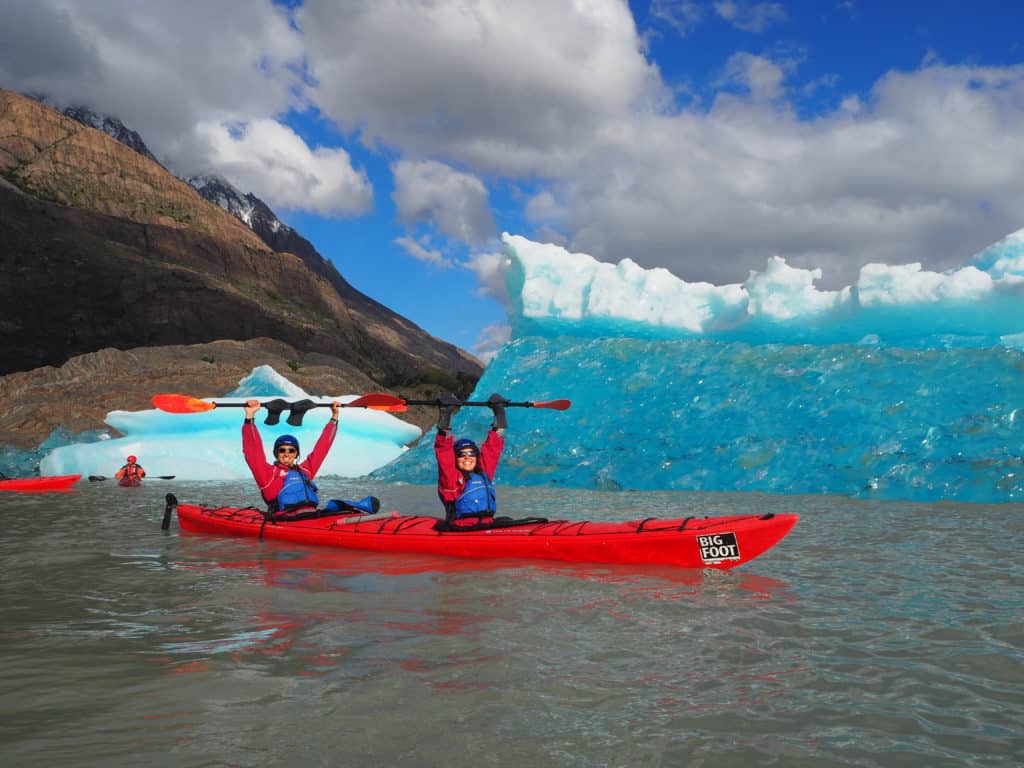
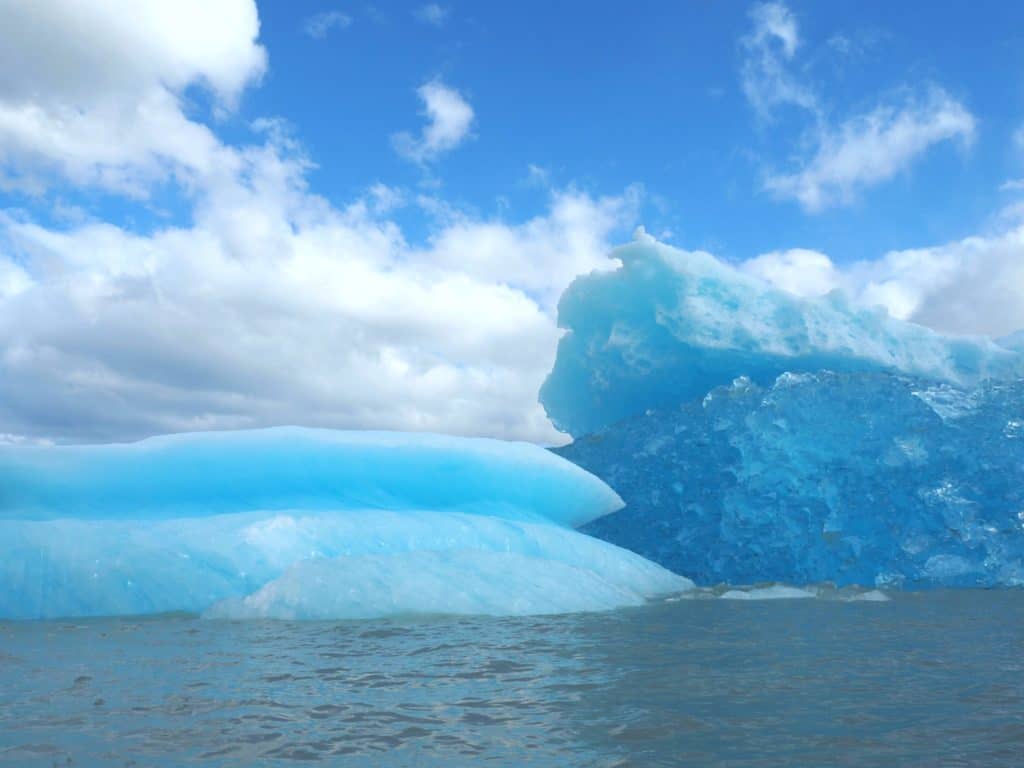

Its hard to pick my favorite highlight from the park, but the time I spent around Glacier Grey is certainly one of them. The day after I kayaked around the glacier, I hiked a few hours further north to glimpse even grander views of this wandering field of ice. I spent two hours looking out across the patchwork of blue and white while I ate a picnic lunch, listening to the wind howl down the valley and watching the clouds wander around the mountaintops surrounding me. It was a perfect ending to an absolutely epic time spent in this wild and wonderful piece of nature.
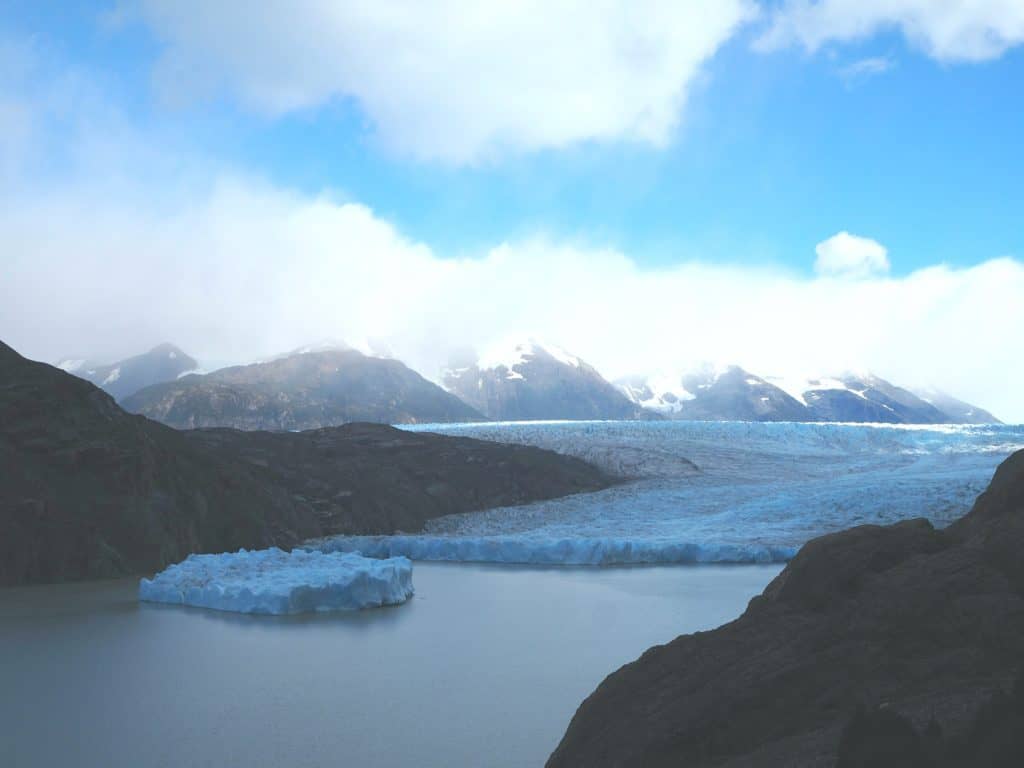
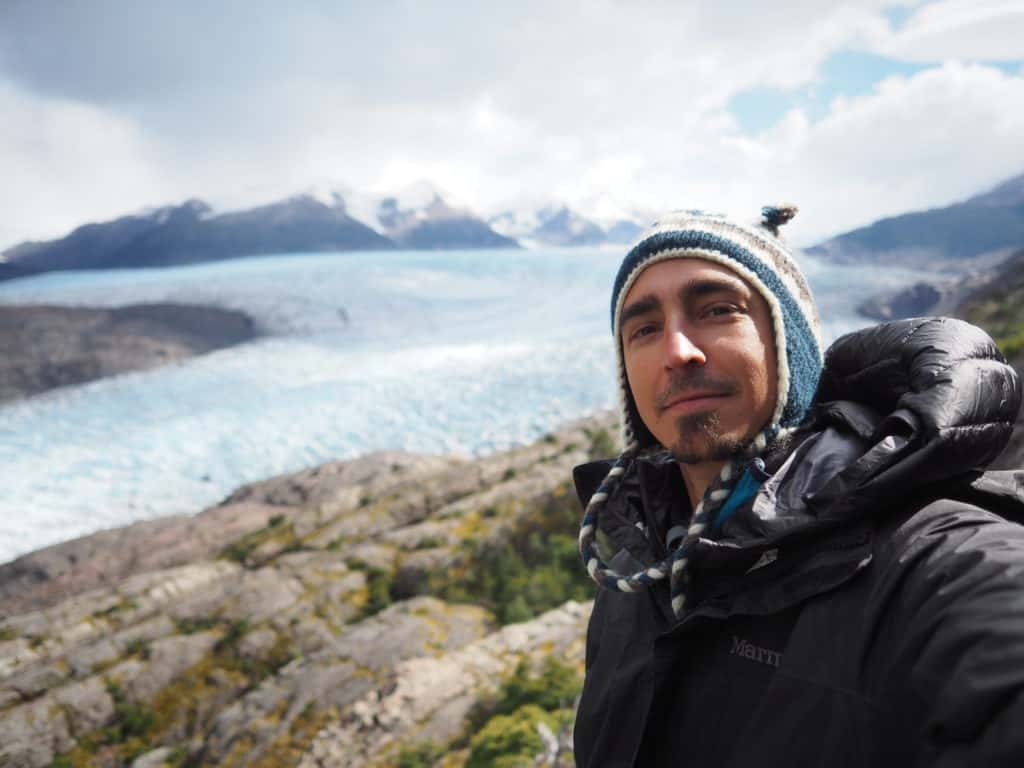
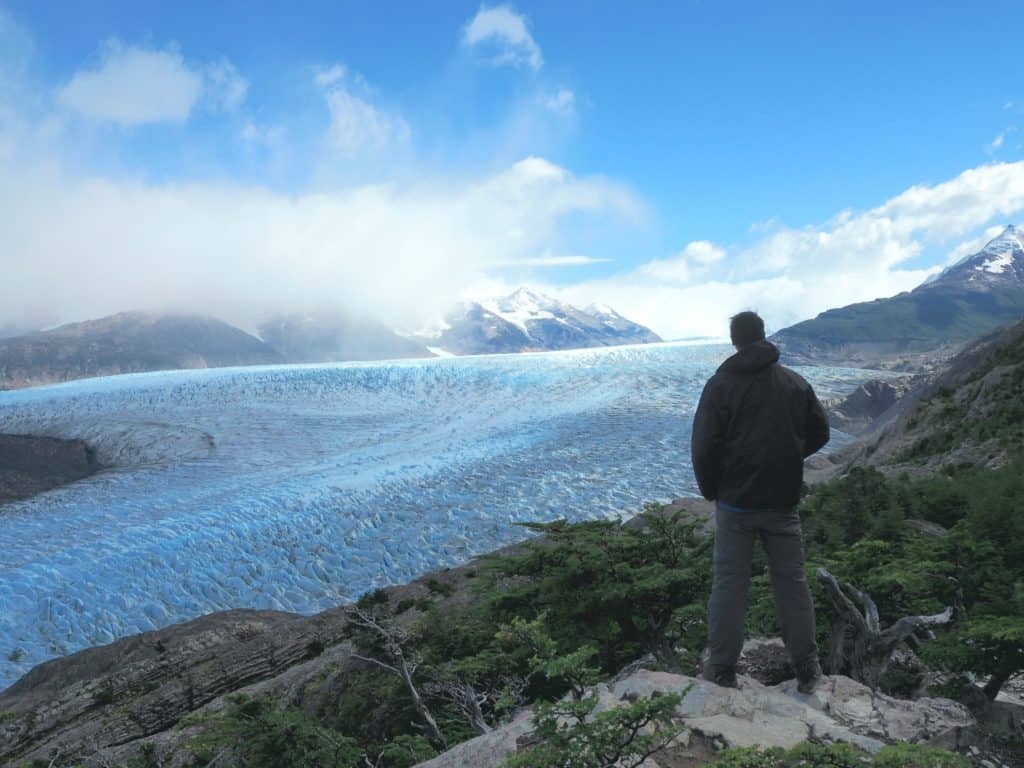


Comments
1 CommentKaren
Mar 27, 2018Wow! I’m so glad you posted those videos – gives a small taste of what you endured. It seems like this trek was a touch tougher than the EBC! Not quite sure which one I’d prefer doing Is the 12h hike normal for that loop or you pushed hard to a further camp? The views are ridiculous. Fabulous!! The glacier! So glad you had some wonderful sun to balance out the hard hike getting there. Thanks for sharing the story. Make sure you’re drinking water + electrolytes! xoxo
Is the 12h hike normal for that loop or you pushed hard to a further camp? The views are ridiculous. Fabulous!! The glacier! So glad you had some wonderful sun to balance out the hard hike getting there. Thanks for sharing the story. Make sure you’re drinking water + electrolytes! xoxo